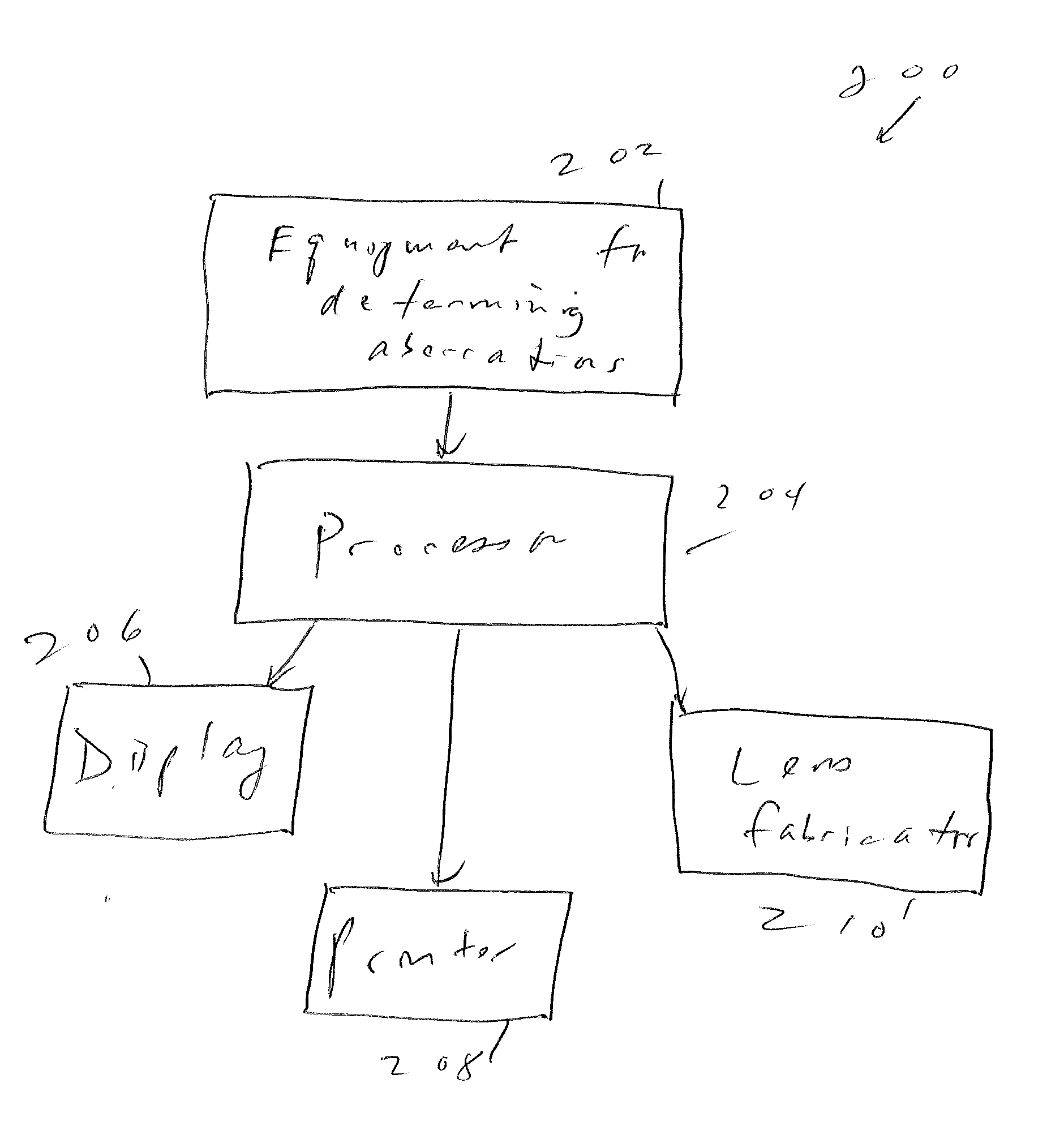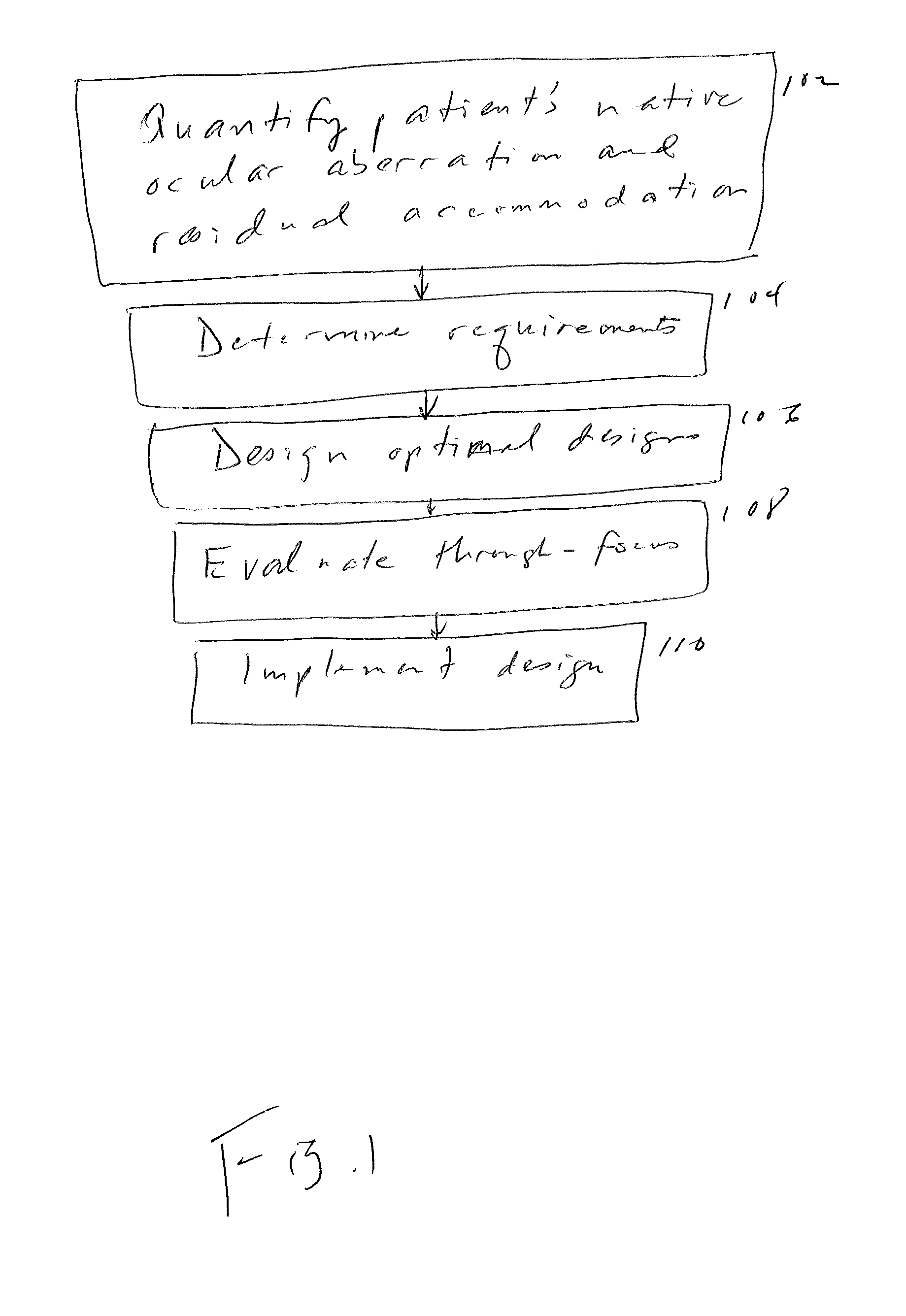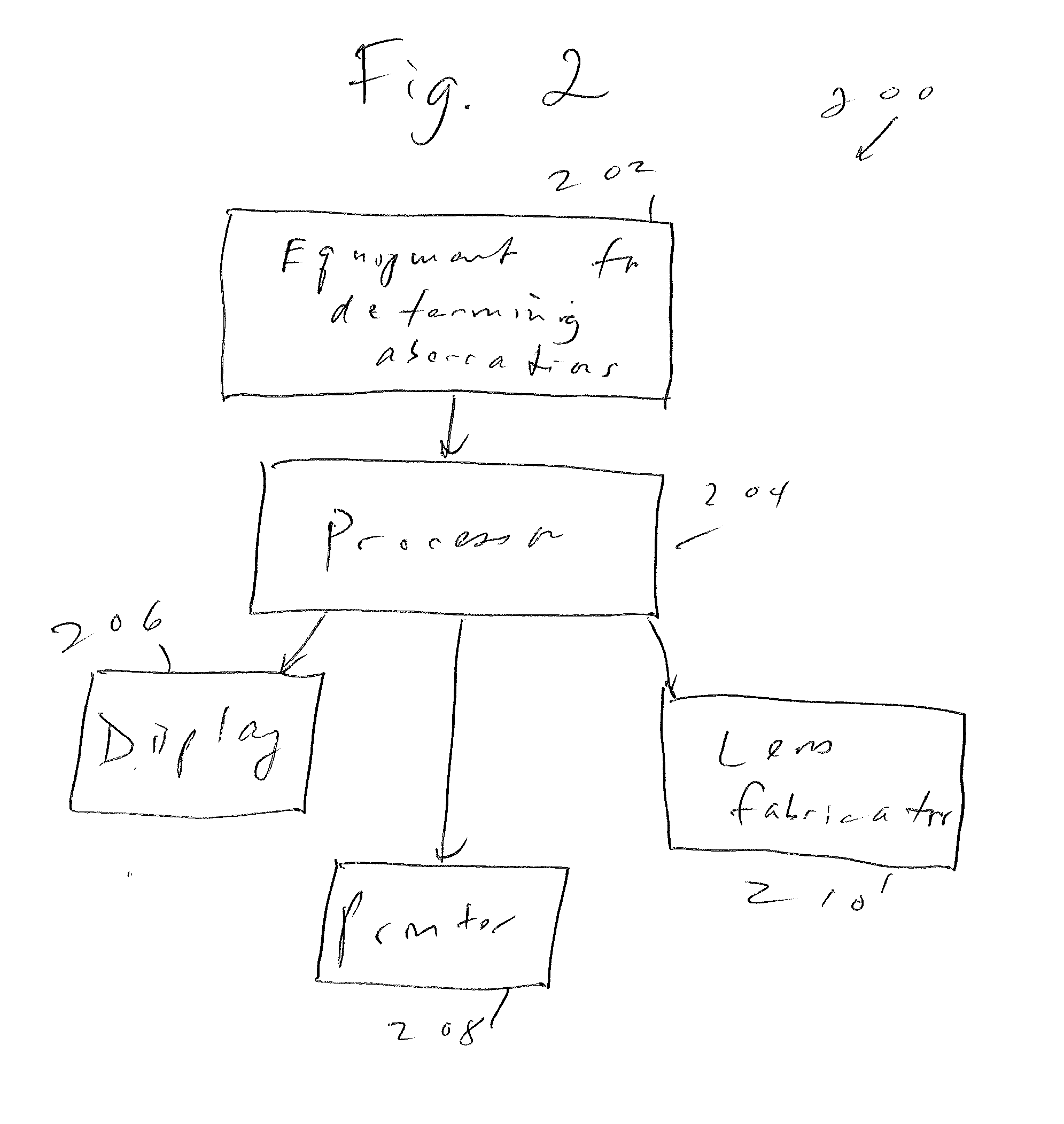Modified monovision by extending depth of focus
a technology of depth of focus and monovision, which is applied in the field of presbyopia treatment, can solve the problems of reducing the visual performance of presbyopic patients, large disparity in retinal image quality between, and anisometropia greater than 2.0 d, and achieves the effect of enhancing through-focus binocular visual performance and reducing optical quality disparities
- Summary
- Abstract
- Description
- Claims
- Application Information
AI Technical Summary
Benefits of technology
Problems solved by technology
Method used
Image
Examples
Embodiment Construction
[0054]A preferred embodiment of the invention will be set forth below with reference to the drawings.
[0055]FIG. 1 is a flow chart showing the method of carrying out the preferred embodiment.
[0056]The method involves the following steps:
[0057]Step 102: Quantifying (or evaluating) the patient's native ocular aberration and residual accommodation;
[0058]Step 104: Determining the patient's requirements, i.e., a range of depth of focus and relative importance of distance vs intermediate vs near vision, which will determine the required amount of anisometropia;
[0059]Step 106: Designing optimal designs of induced aberration for each of the two eyes that take the factors above into account;
[0060]Step 108 Evaluating through-focus visual performance using AO vision simulator; and
[0061]Step 110: Implementing the design onto actual ophthalmic devices, e.g., refractive surgery, contact lens or IOL.
[0062]The method of FIG. 1 can be implemented on the system 200 of FIG. 2. Equipment 202 for determi...
PUM
 Login to View More
Login to View More Abstract
Description
Claims
Application Information
 Login to View More
Login to View More - R&D
- Intellectual Property
- Life Sciences
- Materials
- Tech Scout
- Unparalleled Data Quality
- Higher Quality Content
- 60% Fewer Hallucinations
Browse by: Latest US Patents, China's latest patents, Technical Efficacy Thesaurus, Application Domain, Technology Topic, Popular Technical Reports.
© 2025 PatSnap. All rights reserved.Legal|Privacy policy|Modern Slavery Act Transparency Statement|Sitemap|About US| Contact US: help@patsnap.com



